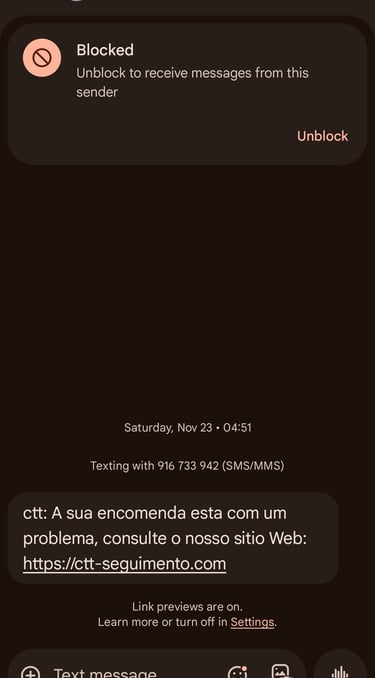Spotting Spam: How to Identify Deceptive SMS and Email Links
Nuno Costa
9/29/20252 min read


Understanding Spam: What You Need to Know
With the rise of digital communication, spam SMS and emails have become increasingly prevalent. These messages often contain misleading URLs designed to trick you into thinking you're accessing a legitimate website. But fear not! By learning to identify these deceptive practices, you can protect yourself from cyber threats.
How to Spot Deceptive URLs
The first line of defense against spam messages is patience and awareness. When you receive an SMS or email that seems suspicious, take a closer look at the URL it contains. Often, the links will attempt to mimic a trusted brand's actual site—only with minute alterations, such as a slight difference in spelling or additional characters. For example, instead of www.example.com, it might read www.examp1e.com.
Moreover, phishing attempts usually create a sense of urgency, prompting the victim to click the link before they think things through. Always remember, if it seems too good to be true or evokes an emotional response, take your time to verify the sender and the URL.
Real-Life Examples of Spam Messages
To further illustrate the types of deceptive messages you may encounter, I'm sharing five examples of SMS phishing attempts I've received. Each of these showcases common tactics used by scammers. (Insert your screenshots here.)
As you go through these examples, note how each message uses familiar company names and logos. This is a common technique employed by cybercriminals to create a false sense of security.










Safeguarding Against Spam and Phishing
The best way to safeguard yourself from such scams is always to verify. If you're unsure about a message, contact the company directly through official channels before clicking any links. Additionally, consider utilizing advanced spam filters and security tools that can help identify and filter potential threats.
In conclusion, awareness is your most powerful tool in avoiding spam SMS and emails. By familiarizing yourself with what to look for and staying vigilant, you can enjoy a safer online experience. Remember: if in doubt, always check before you click!



